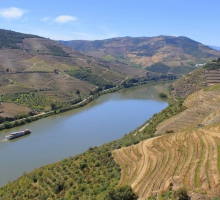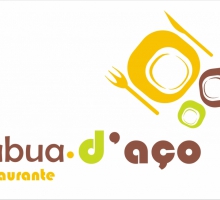Prints Calvary
Station Name: Calvary Engravings
Attributable Period: Iron Age
Location: Abel Botelho Park
Description: Set of two granite outcrops displaying written motifs from the Iron Age. These outcrops, perhaps primitively united, would be part, according to oral sources collected, from a broader set of engraved rocks.
The two panels preserved today are partially buried. The larger panel extends over an area of 2 m x 2 m and has several tens of engraved motifs.
The technique used to engrave these motifs was the engraving by hammering and scratching with metal instrument.
The motifs include the simple "dimples", dimples joined by lines, forming sometimes the known motifs called "alteriformes" (dumb bell shapped ) and rectangular motifs. Most of the motifs for this panel are interconnected. It is natural that the dimples with lines relate to the cult of fertility, closely connected with water, or may be related to the cult, quite widespread at this time, the ofhilatry (cult of snakes).
The other panel shows similar motifs.
We are in the presence of a sanctuary from the Iron Age (about 500 BC), certainly related to the worship of nature. Forests and rivers, the rocks and the trees were part of their religious universe, idolizing them and making temples from the natural spaces, where they performed their rites.
Location: Tabuaço
Station Name: Calvary Engravings
Attributable Period: Iron Age
Location: Abel Botelho Park
Description: Set of two granite outcrops displaying written motifs from the Iron Age. These outcrops, perhaps primitively united, would be part, according to oral sources collected, from a broader set of engraved rocks.
The two panels preserved today are partially buried. The larger panel extends over an area of 2 m x 2 m and has several tens of engraved motifs.
The technique used to engrave these motifs was the engraving by hammering and scratching with metal instrument.
The motifs include the simple "dimples", dimples joined by lines, forming sometimes the known motifs called "alteriformes" (dumb bell shapped ) and rectangular motifs. Most of the motifs for this panel are interconnected. It is natural that the dimples with lines relate to the cult of fertility, closely connected with water, or may be related to the cult, quite widespread at this time, the ofhilatry (cult of snakes).
The other panel shows similar motifs.
We are in the presence of a sanctuary from the Iron Age (about 500 BC), certainly related to the worship of nature. Forests and rivers, the rocks and the trees were part of their religious universe, idolizing them and making temples from the natural spaces, where they performed their rites.
Location: Tabuaço




